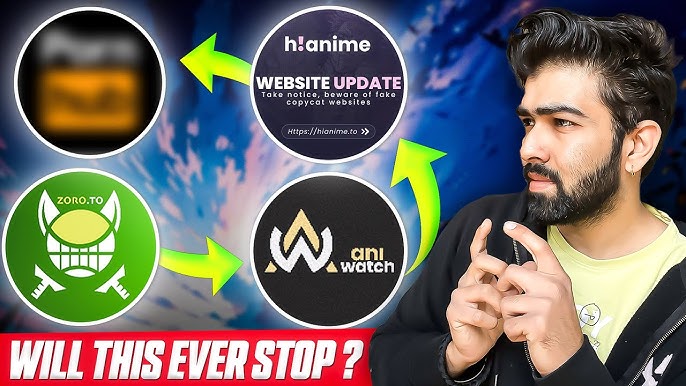Physical Address
304 North Cardinal St.
Dorchester Center, MA 02124
Physical Address
304 North Cardinal St.
Dorchester Center, MA 02124

Contents
In the ever-evolving landscape of online anime streaming, the closure and subsequent rebranding of Aniwatch marked a significant chapter. Known as one of the largest platforms for anime piracy, Aniwatch’s journey from a fan-favorite to facing legal challenges encapsulates the ongoing battle between copyright laws and online content sharing. This article delves into the events that led to the rise and fall of Aniwatch, exploring the implications of its rebranding in the broader context of digital content consumption.
Aniwatch began as a simple streaming site, catering to anime enthusiasts who sought access to their favorite shows without the hefty subscription fees associated with legal platforms. Its vast library, which included a range of genres from classic series to the latest releases, quickly attracted a massive following. The user-friendly interface and high-quality streams added to its appeal, making it a go-to destination for anime fans around the globe.
However, the site’s popularity soon caught the attention of copyright holders and regulatory bodies. The increasing traffic and visibility of Aniwatch underscored the challenges faced by the entertainment industry in controlling the distribution of copyrighted material. As the platform grew, so did the scrutiny from those who owned the rights to the content being freely distributed.
The turning point for Aniwatch came when it was hit with a blocking order from the High Courts. This legal action was a result of concerted efforts by copyright holders to clamp down on piracy. The court’s decision to block Aniwatch was aimed at protecting the intellectual property rights of anime creators and distributors, who argued that piracy sites like Aniwatch severely impacted their revenue and the industry at large.
The blocking order was a significant blow to Aniwatch, as it directly affected its accessibility and disrupted its operations. The site’s administrators were forced to reconsider their approach, leading to a temporary shutdown. During this period, there was widespread speculation among the user community about the future of Aniwatch and the broader implications for free access to anime content.
In response to the legal challenges and the blocking order, Aniwatch underwent a comprehensive rebranding strategy. The site’s administrators decided to pivot towards a more sustainable model, potentially looking into legal avenues to continue providing anime content. This shift was indicative of a larger trend within the piracy community, where sites are increasingly seeking legitimacy in response to heightened legal pressures.
The rebranded version of Aniwatch promised to maintain the core features that made the original site popular while ensuring compliance with copyright laws. This move was met with mixed reactions from its user base; some appreciated the effort to legitimize the platform, while others were skeptical about the potential changes in content availability and user experience.
The case of Aniwatch is a microcosm of the challenges facing the anime streaming industry today. As platforms navigate the complex terrain of copyright laws, user demands, and technological advancements, the industry is at a crossroads. The rebranding of Aniwatch highlights the potential for transformation within piracy sites, but it also raises questions about the future of content consumption and distribution.
For legal streaming services, the evolution of sites like Aniwatch serves as a reminder of the need to innovate and adapt. Offering competitive pricing, exclusive content, and superior user experiences may be key to retaining viewers who might otherwise turn to pirated sources. Meanwhile, copyright holders and regulatory bodies continue to enforce laws that protect creators’ rights while also grappling with the realities of digital piracy.
The fall and subsequent rebranding of Aniwatch illustrate the ongoing dynamics between copyright enforcement and online content sharing. While the future of the rebranded Aniwatch remains uncertain, its story is a testament to the changing landscape of media consumption. As the debate over digital piracy and copyright continues, the outcomes will likely shape the industry for years to come.